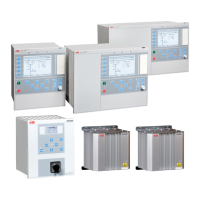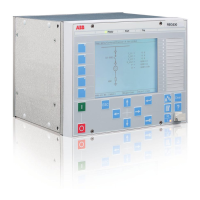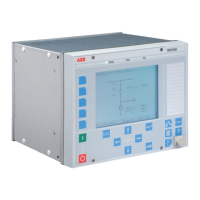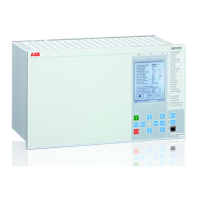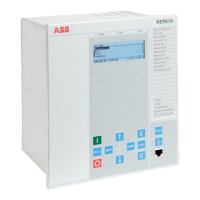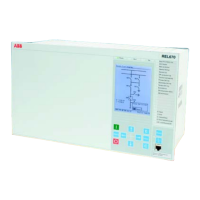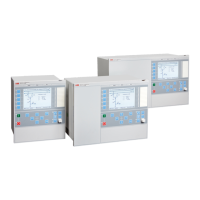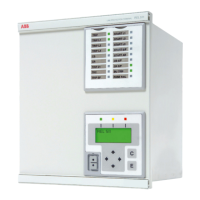where the differential current is evaluated. If the evaluation results in a trip, the trip signal
will be sent over the two communication links.
IED-A IED-B IED-C
IEC16000077-1-en.vsd
3-end differential protection with two communication links
Ldcm312
Ldcm312
Ldcm313
Ldcm312
IEC16000077 V1 EN
Figure 412: Three-end differential protection with two communication links
If the LDCM is in 2Mbit mode, you can send the three local currents as well as the three
remote currents from the other links by configuring the transmitters in IED-B:
1. Ldcm312 transmitter sends the local currents and the three currents received by
Ldcm313.
2. Ldcm313 transmitter sends the three local currents and the three currents received
from Ldcm312.
As a result, six currents are received in IED-A and IED-C. These currents can be
connected to the protection function together with the local three currents.
In order to forward the logic signals (for example, inter-trip or inter-block)
between IED-A and IED-C, the setting LinkForwarded should be defined.
In IED-B, it is set to LDCM313 for Ldcm312 and to LDCM312 for
ldcm313.
This setup results in a master-master-master configuration, but without the benefit of
reverting to a slave-master-slave configuration in case of a communication link
interruption. In case of a communication link interruption, all three IEDs would be
blocked.
22.1.2.1 Communication hardware solutions
The LDCM (Line Data Communication Module) has an optical connection such that two
IEDs can be connected over a direct fibre (multimode), as shown in figure
413. The
protocol used is IEEE/ANSI C37.94. The distance with this solution is typical 110 km/68
miles.
Section 22 1MRK 506 369-UUS -
Remote communication
884 Line distance protection REL670 2.2 ANSI
Application manual

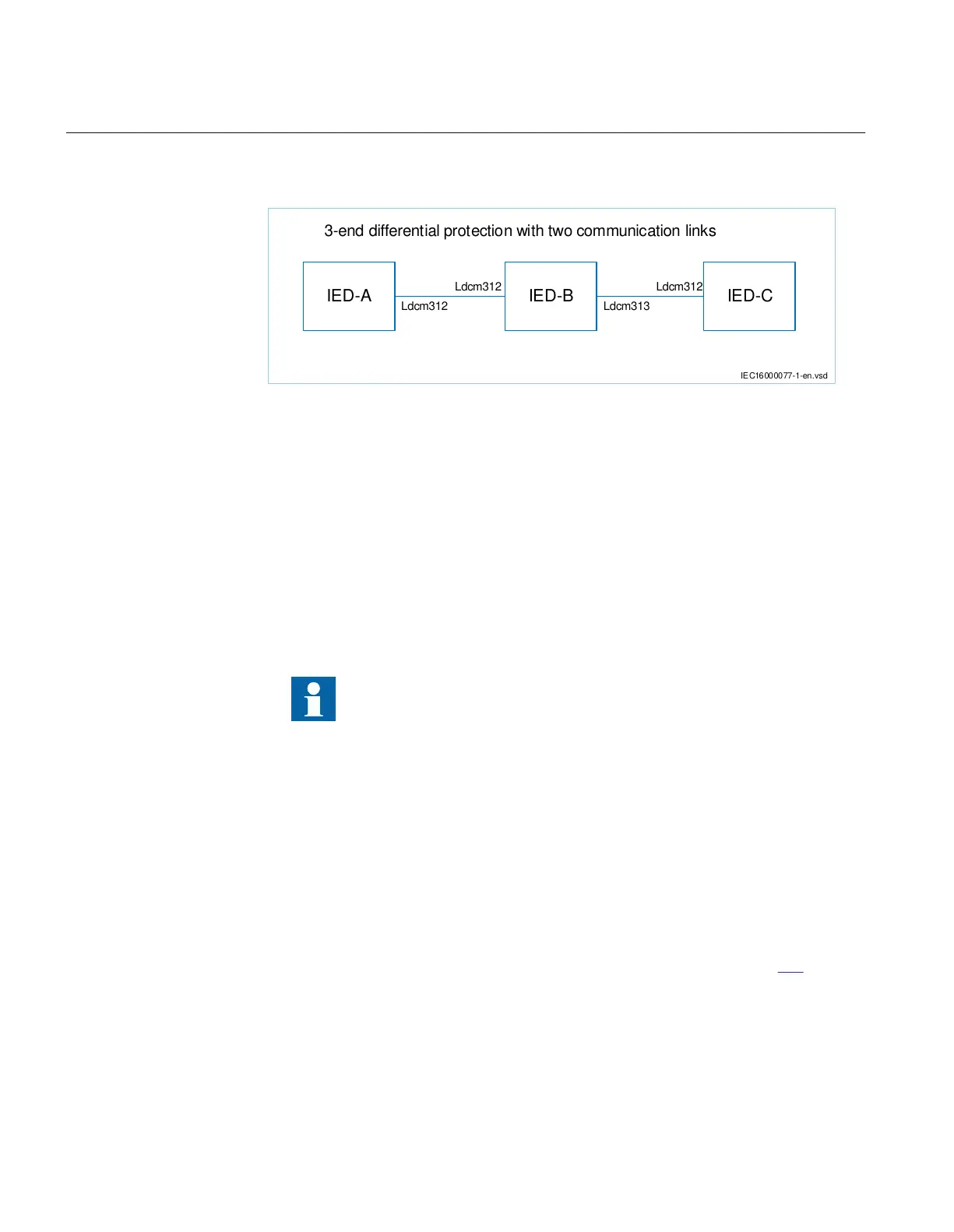